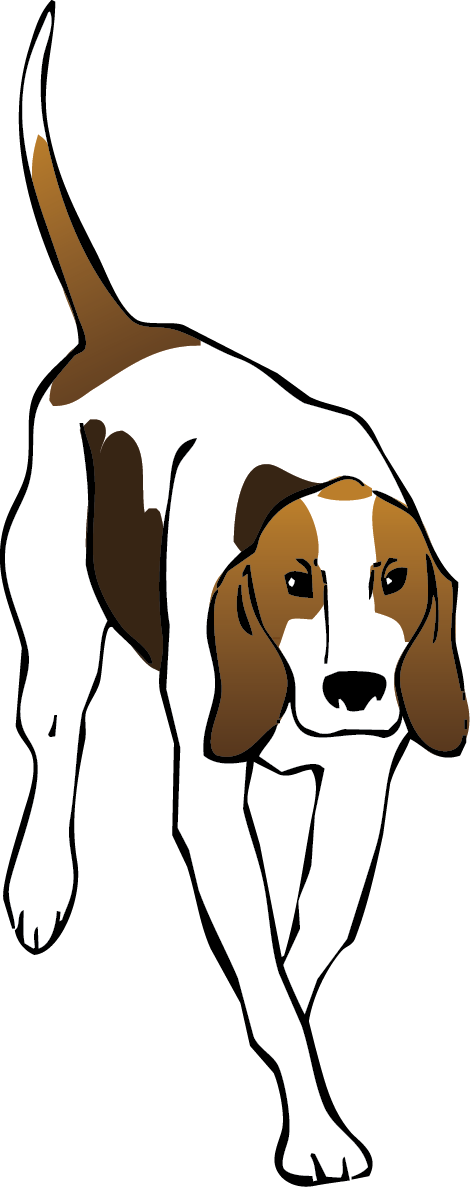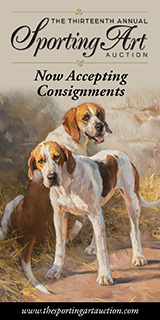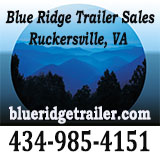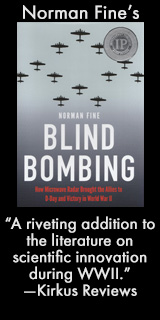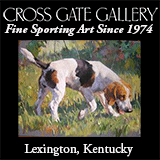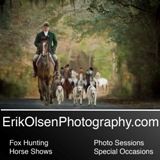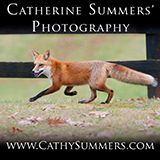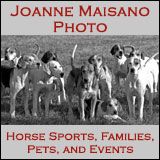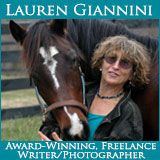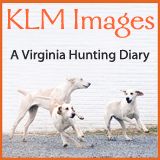field hunter
Cleveland Bays Bring Real Field Hunters to Upperville
If you want to see real field hunters at the Upperville Horse Show, the Cleveland Bay Hunter Division is for you. More than twenty-five percent of the entries in that division have seen service in the hunting field. Another twenty-five percent or so of the Cleveland Bay entries are still too young for the field, and will compete in the in-hand classes. The Cleveland Bay Hunter Division will be held on Thursday afternoon in the Main Hunter Ring, immediately following the Adult Amateur Classic. The classes could begin as early as 1:30 pm. There are about thirty entries in the division, eleven of those being purebreds. Anyone interested in the breed is encouraged to come, Upperville being the single most important showcase for the breed in North America. The Cleveland Bay is said to be England’s oldest breed of horse. As the name suggests, the breed originated in the Cleveland region of the northeastern part of that country. Descendant mares of the so-called Chapman horses—pack horses bred by the monks at the monasteries in the Middle Ages—were crossed in the mid-seventeenth century with imported barb stallions for both pack and harness use. The Chapmans were the foundation mares of the Cleveland Bays. In the eighteenth century, these useful Chapman-barb crosses were crossed with Thoroughbreds to increase their speed under harness. The resulting crosses became known as the Yorkshire Coach Horse—tall, elegant, and a favorite of royalty and the well-to-do. We know these horses today as the Cleveland Bay. Always bay in color, the Cleveland Bay is intelligent, versatile, sensible, bold, and honest. Because it has a strong character coupled with a sensitive temperament, it can be ruined by insensitive handling early in its schooling. The Cleveland Bay breeds true to type (reproduces with consistency), and with its good substance and free movement, makes an excellent cross with the Thoroughbred. Cleveland Bay enthusiasts will host tailgate refreshments in the parking area immediately following the classes—a good opportunity for anyone interested in learning more about this breed to meet owners and breeders. Posted June 3, 2015
Read More
Thoughts on Field Hunter Competitions
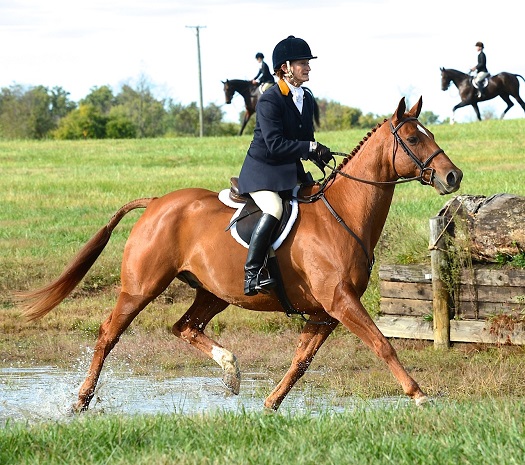 A competent horse and rider, confidently and comfortably crossing the country: what we all aspire to! Laurie Ambrose and Stretch, winning the Theodora A. Randolph Field Hunter Championship in Virginia. / Douglas Lees photo
A competent horse and rider, confidently and comfortably crossing the country: what we all aspire to! Laurie Ambrose and Stretch, winning the Theodora A. Randolph Field Hunter Championship in Virginia. / Douglas Lees photo
The recently held Theodora A. Randolph Field Hunter Championship in Virginia is a unique competition. It differs from the more usual one-day hunter trial in which foxhunters ride individually over a course of obstacles, often including lead-overs, trot fences, fast gallops, and hold-hards.
In the Theodora A. Randolph Championship format (see Susan Monticelli’s report in separate article), field hunters are observed by mounted judges for several days during a series of actual foxhunts behind different packs of foxhounds. The judges’ task during these hunts is to select those horse/rider combinations they wish to see in a final day of competition. The finals, held each year at Glenwood Park in Middleburg on the morning of the Virginia Fall Races, consist of a mock hunt following a Field Master over a course of obstacles, and then individual tests similar to those in a hunter trial for the final ten or so selected.
While some avid and capable foxhunters believe that foxhunting is not a competitive sport and decline to participate, and while I can appreciate and respect their view, I also see benefits from these competitions. From one aspect, it’s a great value. If you want a hunting holiday in Virginia, you get to hunt with four different packs for an entry fee of not much more than the cost of a single cap at some of these hunts. And parties all week to boot!
Piedmont Pair Are 2014 Field Hunter Champions in Virginia
Laurie Ambrose and Stretch from the Piedmont Fox Hounds won the 2014 Mrs. Theodora A. Randolph Field Hunter Championship. / Douglas lees photo
In a hark back to bygone days, the Theodora A. Randolph Field Hunter Championships combine a whirlwind week of foxhunting and socializing against a backdrop of sporting estates, well-bred foxhounds, and passionate foxhunters. Always held the last week of September and ending the first weekend of October, this year's event attracted seventy-four entries with a brilliant card of hosting hunts: Orange County Hounds, Blue Ridge Hunt, Loudoun Fairfax Hunt and the Piedmont Foxhounds. Judges ride alongside the field to observe the competitors in action before selecting several riders each day, based on how well their horses performed, for the finals on Saturday. Every hunt hosted a tailgate, and there were social functions every evening.
Foxhunters from twenty-two hunts and eight states rode in the event: Andrews Bridge, Belle Meade, Blue Ridge, Bull Run, Casanova, Deep Run, Elkridge-Harford , Farmington, Glenmore, Hillsboro, Keswick, Loudoun Fairfax, Lowcountry, Middleburg, Newmarket-Middletown Valley, Old Dominion, Orange County, Palm Beach, Piedmont, Snickersville, Warrenton, and Whiskey Road. Riders came from Florida, Georgia, Maryland, Pennsylvania, South Carolina, Tennessee, and Virginia. The six judges were Helen Brettell, Middleburg; Snowden Clark; Liz McKnight, ex-MFH, Elkridge-Harford; Ginny Perrin, MFH, Deep Run, and the husband-and-wife team of Lincoln Sadler and Cameron Sadler, MFH, Moore County.
Remembering the Irish War Horse
Fascinated by our summer series of articles about the WWI war horses on the occasion of the centennial of that horrific conflict, Noel Mullins, a regular contributor to Foxhunting Life, sent us this story that he wrote for this year’s Souvenir Programme of the Dublin Horse Show. Noel is a Member of the Royal Dublin Society Library & Archives Committee. His story is about Gladeye, a field hunter that went to war, survived, and returned to jump at the Dublin Horse Show in 1926.
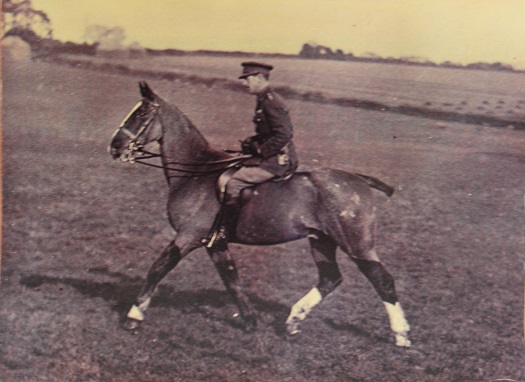 War Horse Gladeye and Brigadier Walter Brooke
War Horse Gladeye and Brigadier Walter Brooke
This year marks the centenary of World War I, and ceremonies around the world remember the nine million human casualties lost in the conflict. But it is often forgotten that eight million War Horses also lost their lives, going through the most terrifying experiences known to any living creature. War was declared on the July 28, 1914 and was expected to end by Christmas 1914, but sadly it lasted another four years until November 11, 1918.
Probably the two most well known Irish War Horses in history were Emperor Napoleon’s white horse Marengo and the Duke of Wellington’s Copenhagen who met at the Battle of Waterloo. Both are said to have been purchased at an Irish horse fair. War Horses in the mounted cavalry units were deployed in many battles in the first years of WWI, amongst them, the battles of Mons, First and Second Battles of Ypres, Festubert, Aubers Ridge, Marne, Vimy Ridge, the Somme Hill, and Cambrai.
Hark! Old Horse
Carla Babcock, Honorary Secretary for Camargo Hunt), Carla Hawkinson, MFH
December 16, 2013
Art & Literature Literature
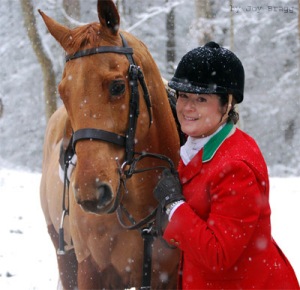 Carla Hawkinson, MFH with her soulmate, Forty-One, her inspiration for the poem / Joy Bragg photoThis wonderful poem recently appeared on This poem recently appeared on FaceBook under the credit line, Author Unknown. We must correct that! The author is Carla Hawkinson, MFH of the Tennessee Valley Hunt.
Carla Hawkinson, MFH with her soulmate, Forty-One, her inspiration for the poem / Joy Bragg photoThis wonderful poem recently appeared on This poem recently appeared on FaceBook under the credit line, Author Unknown. We must correct that! The author is Carla Hawkinson, MFH of the Tennessee Valley Hunt.
"Hark! Old Horse" was published in the Summer, 2008 issue of Covertside when I was editor of that magazine. It surely deserves to be re-published, and Foxhunting Life is proud to do it...with appropriate credit. -Ed.
Hark! Old horse.
Please meet me at the gate.
Hounds are leaving kennels soon,
And we will not be late.
Step up. Old horse.
Carry me to the meet.
Our years together count for much,
Though you're no longer fleet.
Trot on. Old horse.
I know you hear the horn.
The hounds are in the valley now,
The fox is in the corn!
Cleveland Bays Come “Home” to Farnley
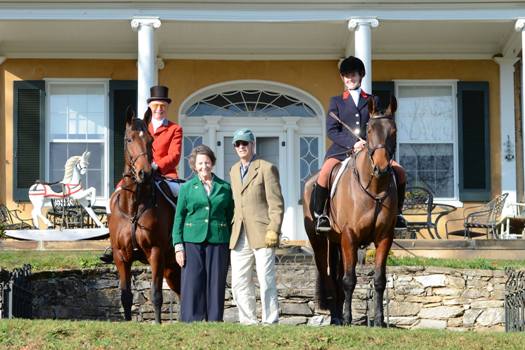 l-r: Organizer Peter Cook, Blue Ridge Hunt; hosts Hettie Mackay-Smith Abeles and Dr. Matthew Mackay-Smith; Denya Dee Leake, honorary whipper-in, Old Dominion Hounds, step-granddaughter of Alexander Mackay-Smith / Liz Callar photo,
l-r: Organizer Peter Cook, Blue Ridge Hunt; hosts Hettie Mackay-Smith Abeles and Dr. Matthew Mackay-Smith; Denya Dee Leake, honorary whipper-in, Old Dominion Hounds, step-granddaughter of Alexander Mackay-Smith / Liz Callar photo,
It's been nearly seventy-five years since Alexander Mackay-Smith's Farnley Farm in White Post, Virginia was home to a herd of some fifty Cleveland Bays. In his travels, Mackay-Smith had discovered the ancient breed of coach horse in the northeast of England and became convinced they would make ideal field hunters. He imported breeding stock, encouraged Tom and Marilyn Webster of the Idle Hour Stud to buy and stand Rambler’s Renown (who was to become North America’s leading sire of Cleveland Bays), and re-introduced the endangered breed to a new generation of horsemen and women in this country.
Farnley was once again in its bay glory on Saturday, November 16, 2013 as a record number of twenty-one Cleveland Bays (seven purebreds and fourteen part-breds) gathered at the invitation of Mackay-Smith’s children, Hetty Mackay-Smith Abeles and Dr. Matthew Mackay-Smith; Cleveland Bay breeder Peter Cook; and the Masters of the Blue Ridge Hunt for a celebration of the legacy that Farnley has left to the Cleveland Bay breed in North America.
Hetty Abeles and Dr. Matthew Mackay-Smith greeted the Cleveland Bay delegation and welcomed them back to Farnley as they assembled for a photograph in front of the house. Blue Ridge Joint-Master Anne McIntosh gave the official welcome on behalf of Joint-Masters Linda Armbrust and Brian Ferrell, after which participants divided into three flights and trotted up the lane to the first covert.
The Clipper that Stands in the Stall at the Top
 Illustration by Lionel EdwardsNot long ago we polled our readers and were pleased to find that the great majority of you enjoyed reading the classic foxhunting poems. Here’s one such classic that to me best expresses the pride, gratitude, and love the foxhunter feels for that one special horse—the most generous, the most reliable, the most gentlemanly of all we’ve had—that takes us over the day’s obstacles and brings us safely home.
Illustration by Lionel EdwardsNot long ago we polled our readers and were pleased to find that the great majority of you enjoyed reading the classic foxhunting poems. Here’s one such classic that to me best expresses the pride, gratitude, and love the foxhunter feels for that one special horse—the most generous, the most reliable, the most gentlemanly of all we’ve had—that takes us over the day’s obstacles and brings us safely home.
Go strip him, lad! Now, sir, I think you’ll declare
Such a picture you’ve never set eyes on before,
He was bought in at Tatt’s for three hundred I swear,
And he’s worth all the money to look at, and more;
For the pick of the basket, the show of the shop,
Is the Clipper that stands in the stall at the top.
In the records of racing I read their career,
There was none of the sort that could gallop and stay,
At Newmarket his sire was the best of the year,
And the Yorkshiremen boast of his dam to this day;
But never a likelier foal did she drop
Than this Clipper that stands in the stall at the top.
2013 North American Field Hunter Championships Survive Summer Temps
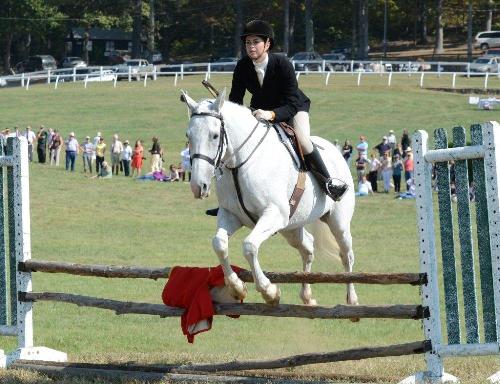 2013 North American Field Hunter Champion Greyland Woods, owned by Karen Mantz and ridden by daughter Teresa Croce, jumps to victory over Judge Jean Derrick's scarlet coat (Belle Meade colors). / Liz Callar photo
2013 North American Field Hunter Champion Greyland Woods, owned by Karen Mantz and ridden by daughter Teresa Croce, jumps to victory over Judge Jean Derrick's scarlet coat (Belle Meade colors). / Liz Callar photo
Blistering hot weather visited Virginia for the past four weeks. While not unusual this time of year, the length of the hot spell, with temperatures hovering in the high eighties and even reaching into the low nineties, has proved miserable to man and beast alike, but it failed to deter foxhunters who entered this year's North American Field Hunter Championships.
On Monday, September 30, the Championships began at Keswick. Hounds met at Glenwood, a fixture in the neighborhood of James Madison's Montpelier, outside the town of Orange. Contestants from as far away as Florida and Georgia traveled to compete in the event, as well as to enjoy early autumn hunting in Virginia. They were not disappointed. Keswick huntsman Tony Gammell provided a fine day of sport in the lovely rolling countryside as hounds ran across the nearby road, back again, and beyond the fixture into a scenic expanse of woods and cornfields. Afterward, everyone enjoyed a tailgate as five contestants were selected for the finals.
On Tuesday, October 1, hounds met at Owl Run Farm in Warrenton, home of Casanova Hunt Joint-Master Mrs. Joyce Fendley. Previously the home of Donna and Jack Eicher, huntsman at Rombout and later Farmington Hunt, the grounds include a lake and a cluster of graceful weeping willows out front. The residence and barns all exude the charm of old Virginia Hunt Country—weathered stone, stout board and batten, low eaves and metal roofs. A special surprise awaited the field this morning when shortly after casting hounds, an eruption in a cornfield revealed that hounds had encountered a black bear! Fortunately, the pack obeyed their orders to ignore the bear as it beat a hasty retreat. The remainder of the morning proved quieter, and as the field hacked in, Mrs. Fendley positioned herself, as she always does at the end of a hunt, such that she could personally thank everyone in the field as they passed by on their way to their trailer. This small but thoughtful act is just one of many that make hunting in Virginia so special and unique. It was a hot, thirsty, and tired field that gathered under a tent to drink and devour a delicious crab dip while recalling the excitement of having gone on their first bear hunt! This morning, six finalists were announced.
Field Hunter Championship of North America Is Scheduled
The 2013 Field Hunter Championship of North America will be held in Virginia from Monday, September 30 to Sunday, October 6. Competitors will hunt four days, with fixtures at Keswick Hunt, Casanova Hunt, Snickersville Hounds, and Piedmont Fox Hounds. The Finals will be held on Sunday, October 6 at Glenwood Park. The final day at Glenwood will start with the judging of the “Best Turned Out” horse and rider, after which a short drag hunt will start and end on the racecourse. At least ten finalists will be chosen to ride over a “handy hunter” course, where they may be required to drop a rail, open a gate, and hand gallop and halt. Spectators are encouraged to attend. This is the second and final day of the Virginia Fall Races at Glenwood Park, so there’s a lot going on! The family of the late Mrs. Theodora Ayer Randolph will again honor her memory and her lifetime commitment to fox hunting by awarding a $2,500 cash prize to the home hunt of the winner. The Museum of Hounds and Hunting in Leesburg will award a one-year membership to the winning rider and to the two highest-placed Juniors that qualify for the Finals. General Admission price is $30.00 per carload of four people. To reach Glenwood Park from the Washington DC area, take I-66 West and exit Route 50 West (Exit 57B towards Winchester). Drive approximately 25 miles to Middleburg and turn right at stop light in Middleburg (Route 626, Foxcroft Road). Proceed 1 mile North to Glenwood Park on your right. For additional information and/or photos call the name above or contact the Field Hunter Championship Chairman Ms. Pippy McCormick at 540-454-2854. Posted September 6, 2013
Read More
A Dream Fulfilled
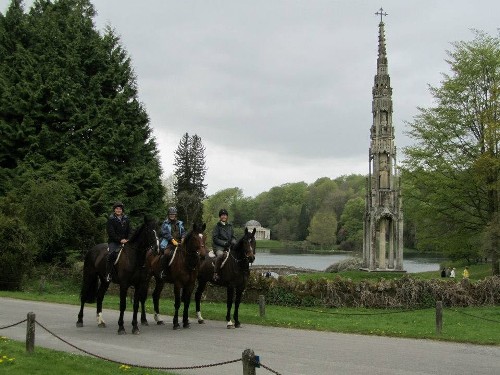 (l-r) Megan, Deb, and Marti
(l-r) Megan, Deb, and Marti
The inspiration for this trip happened quite by accident. While traveling with cousins in the southwestern part of England in May of 2012 , we happened to stop for a Sunday roast at the pub in the tiny hamlet of Highclere Castle, the home of the wonderful television series, Downton Abbey.
We had missed, by a day, a trail ride on the grounds of the castle. My cousin Marti and I have taken many riding trips and are always looking for a new adventure. We began to dream of a trip in England where we would ride in some of the places that we had read about all of our lives in English novels but had never seen. As we visited the Exmoor and the Dartmoor, the haunts of wild ponies and the characters of Daphne du Maurier, we became more excited. We did not, however, have any idea how to accomplish our vision.
